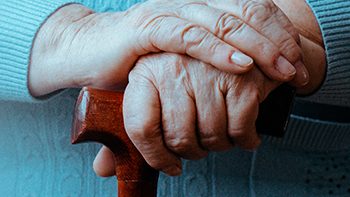
Cardiovascular Disease and Seniors
Your heart, arteries and blood changes with age. Your heart can increase in size, the heart walls thicken, arteries may narrow and your heart’s valves may not work as well. While all of these changes can increase your chances of developing a cardiovascular disease, there are many factors that can reduce your risk of heart disease. If you are currently a smoker, then you can lower your risk of cardiovascular disease by quitting and even reducing the amount of tobacco that you use. It is also recommended that you maintain a healthy diet, including lowering your cholesterol intake, in order to engage in a heart-healthy diet. If you are not currently active, then consider an exercise routine in order to stay active and reduce your likelihood for obesity, which only furthers your risk of heart disease. Exercise can also reduce your risk of high blood pressure, which is another risk factor for cardiovascular disease. Always engage in regular check-ups for your heart and keep up on all preventative screening that is recommended for your age. If you are diagnosed with cardiovascular disease, then treatment options will depend on the nature of your disease. Medication is commonly used to control high or low blood pressure. If your arteries become too narrowed or partially blocked by plaque buildup, then your doctor may recommend having a stent inserted in order to open up the narrowed artery. This procedure is performed under local anesthesia and mild sedation, but involves no major incisions and is relatively common within the United States. If an artery is blocked off completely, then a surgeon may need to perform a heart bypass surgery, which is the most common type of open-heart surgery in America. This surgery is more invasive, but it can be lifesaving, as blocked arteries can lead to heart attacks and death. Heart bypass surgery involves using a blood vessel from another part of your boy in order to “bypass” the blocked artery. Pacemakers are also an option if your heart does not beat correctly and medication has failed previously to correct the issue. A pacemaker sends an electric impulse into your heart muscles in order to maintain a suitable rhythm. It is inserted through a minor and common surgical procedure.Type 2 Diabetes and Seniors
It is estimated that over 25 percent of senior citizens who are older than 65 years of age have developed type 2 diabetes. Therefore, it is important to arm yourself with the knowledge of what this chronic medical illness pertains, the symptoms that develop, how type 2 diabetes can be managed and the complications that can occur if type 2 diabetes is not properly managed. When you eat, your body is supposed to turn the food that you consumed into glucose, which can be used as energy with the help of insulin. Type 2 diabetes is a phenomenon where your body fails to use that insulin right away. Type 2 diabetes is the most common form of diabetes and a growing concern within the country. While you are more likely to develop type 2 diabetes if it runs in your family, there are a number of factors that are under your control, such as managing your weight, eating right and exercising regularly. There are a number of undiagnosed cases of type 2 diabetes, so diabetes screening is important, especially if you experience symptoms such as fatigue, excessive hunger or thirst, weight loss, frequent urination or blurred vision. It is important to discuss your symptoms with your doctor in order to undergo blood tests that can determine whether or not you may be diabetic. If you are diagnosed with type 2 diabetes, then it is important that you manage the disease in order to avoid more serious complications such as blindness, hearing loss and neuropathy. While some seniors will be able to manage their diabetes with a healthy diet and exercise plan alone, some may be required to take medication or insulin injections.Arthritis That Affects Senior Citizens
Arthritis refers to the inflammation of joints, but there are various types of arthritis that can affect different areas of your body and have different symptoms. Therefore, it is important to learn about the two most common forms of arthritis among senior citizens. Osteoarthritis (OA) is the most common form of arthritis among senior citizens, affecting more than 20 million Americans and statistically developing more often in women than in men. OA causes the breakdown of cartilage within the joints, most commonly in the weight-bearing joints such as knees, hips and spines. However, OA can also affect fingers, toes and your neck. Symptoms of osteoarthritis include the following:- Joint soreness or aching, especially with movement.
- Pain after overuse or long periods of inactivity.
- Stiffness after resting.
- Bony enlargements in the middle or end of fingers.
- Joint swelling.
The Types of Dementia
Dementia is not a specific disease, but rather refers to a group of symptoms that are associated with several different chronic diseases and medical conditions. Dementia is characterized as memory loss, difficulty finding words, trouble with problem-solving, confusion, disorientation, hallucinations, personality changes and inappropriate behaviors. While dementia does sometimes affect younger individuals, it is far more common with age, especially after 65 years of age.- Immune disorders
- Nutritional deficiencies
- Certain medications
- Subdural hematomas
- Brain tumors
- Alzheimer’s disease
- Vascular dementia
- Lewy body dementia
- Frontotemporal dementia
- Huntington’s disease
- Parkinson’s disease
By Admin –